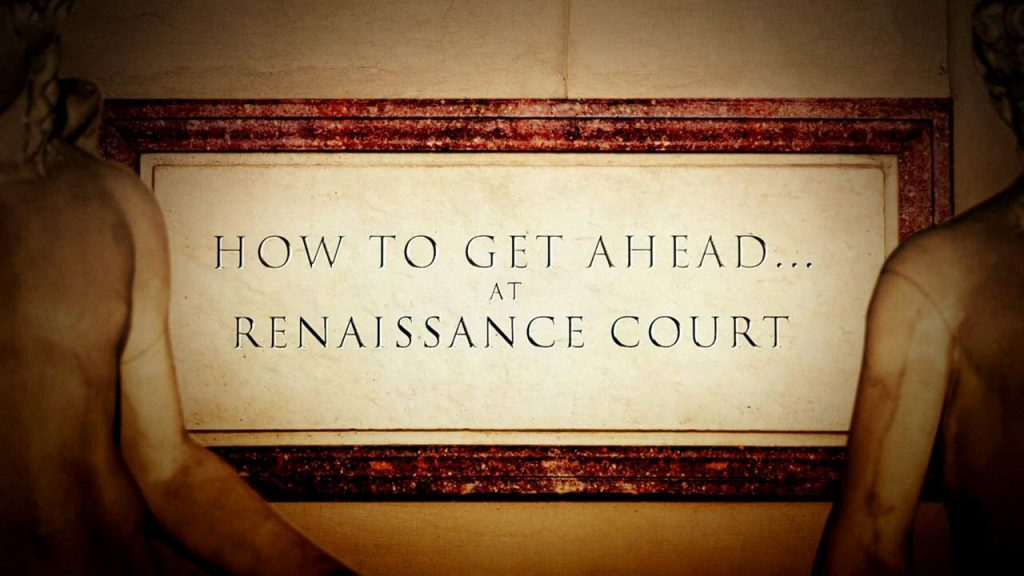How to Get Ahead – At Renaissance Court: Writer, broadcaster and Newsnight arts correspondent Stephen Smith explores Renaissance Florence under the reign of Grand Duke Cosimo Medici. Cosimo’s fledgling court prized the finer things in life and some of the greatest painters, sculptors and craftsmen in world history came to serve the Grand Duke. But successful courtiers had to have brains as well as brawn. The canniest of them looked to theorists like Niccolo Machiavelli for underhand ways to get ahead, whilst enlightened polymaths turned their minds to the heavens, and to ice cream.
Florence, Italy was one of the centers of the Renaissance, a period of cultural, intellectual, and artistic revival that began in Europe in the 14th century. It was home to many great artists, writers, and philosophers who helped to shape the course of the Renaissance and contributed to its legacy. Some of the most famous figures associated with Renaissance Florence include Dante Alighieri, Leonardo da Vinci, and Michelangelo. The city was also home to the Medici family, a powerful banking and political dynasty that played a key role in the development of the Renaissance in Florence and beyond.
The Renaissance courts of Europe were meant to dazzle—courtiers feasting at lavish tables and knights in gleaming armor might spring to mind. Life at court was certainly lavish, but everything from prayer to the display of heraldry was governed by complex codes of conduct. Writer and broadcaster Stephen Smith finds out what it took to survive and prosper in the most artistic, decadent and dangerous royal courts in history.
The Renaissance was a period of cultural, intellectual, and artistic revival that began in Europe in the 14th century and spread to other parts of the world. It is known for the development of new ideas in art, literature, philosophy, science, and politics, and for the rediscovery of classical knowledge and culture. It is considered one of the most important periods in Western history.
How to Get Ahead – At Renaissance Court
Renaissance
The Renaissance is a period in European history marking the transition from the Middle Ages to modernity and covering the 15th and 16th centuries, characterized by an effort to revive and surpass ideas and achievements of classical antiquity. It occurred after the Crisis of the Late Middle Ages and was associated with great social change. In addition to the standard periodization, proponents of a “long Renaissance” may put its beginning in the 14th century and its end in the 17th century.
The traditional view focuses more on the early modern aspects of the Renaissance and argues that it was a break from the past, but many historians today focus more on its medieval aspects and argue that it was an extension of the Middle Ages. However, the beginnings of the period – the early Renaissance of the 15th century and the Italian Proto-Renaissance from around 1250 or 1300 – overlap considerably with the Late Middle Ages, conventionally dated to c. 1250–1500, and the Middle Ages themselves were a long period filled with gradual changes, like the modern age; and as a transitional period between both, the Renaissance has close similarities to both, especially the late and early sub-periods of either.
The intellectual basis of the Renaissance was its version of humanism, derived from the concept of Roman humanitas and the rediscovery of classical Greek philosophy, such as that of Protagoras, who said that “man is the measure of all things”. This new thinking became manifest in art, architecture, politics, science and literature. Early examples were the development of perspective in oil painting and the revived knowledge of how to make concrete. Although the invention of metal movable type sped the dissemination of ideas from the later 15th century, the changes of the Renaissance were not uniform across Europe: the first traces appear in Italy as early as the late 13th century, in particular with the writings of Dante and the paintings of Giotto.
As a cultural movement, the Renaissance encompassed innovative flowering of Latin and vernacular literatures, beginning with the 14th-century resurgence of learning based on classical sources, which contemporaries credited to Petrarch; the development of linear perspective and other techniques of rendering a more natural reality in painting; and gradual but widespread educational reform. In politics, the Renaissance contributed to the development of the customs and conventions of diplomacy, and in science to an increased reliance on observation and inductive reasoning. Although the Renaissance saw revolutions in many intellectual and social scientific pursuits, as well as the introduction of modern banking and the field of accounting, it is perhaps best known for its artistic developments and the contributions of such polymaths as Leonardo da Vinci and Michelangelo, who inspired the term “Renaissance man”.




